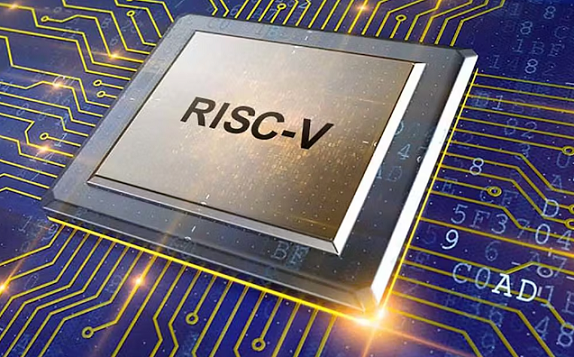Bipartisan US lawmakers call on the Biden administration to address RISC-V chip standard for national security reasons.
The US is considering restricting its companies from participating in RISC-V, an open-source chip design architecture that China is relying on to reduce its reliance on foreign technologies. This move, driven by national security concerns and supported by lawmakers from both political parties, could escalate the technology rivalry between the two nations.
RISC-V offers chip developers the flexibility to customize their designs and has become a key element in China’s strategy to decrease its dependence on foreign intellectual property suppliers amidst an ongoing tech war with the US. While there has been no official response from Beijing or industry associations, Chinese analysts and experts have begun to express their views on this development.
In a statement shared on WeChat, Zhang Guobin, the founder of the Chinese semiconductor industry website eetrend.com, has articulated the potential for the recent developments to serve as the catalyst for “a fresh theater of conflict in the ongoing semiconductor rivalry between the United States and China.” This development builds upon the existing restrictions imposed by Washington on mainland China’s access to cutting-edge semiconductor technology and tools.
Zhang noted that the RISC-V International, a non-profit organization dedicated to advancing the open-source chip architecture, has relocated its headquarters from the United States to Switzerland. However, it has surprisingly become the focus of attention from American policymakers.
Additionally, there remains significant uncertainty regarding the ramifications of potential sanctions if they are indeed implemented. One user, identified as “Qintian,” expressed this ambiguity on the EEWorld electronics engineering forum.
Despite its origins in 2010 at the University of California, RISC-V has gained traction in China as a possible avenue to navigate around US technology restrictions. This choice is motivated by both strategic considerations and commercial interests, including cost reduction and diversification away from the ecosystem associated with the British semiconductor design behemoth, Arm.
At present, US-based Arm faces limitations in selling specific high-end intellectual properties (IPs) to Chinese clients due to US-imposed constraints. Concurrently, US electronic design automation company Synopsys can only offer a reduced-function version of its software to Chinese companies such as Huawei Technologies, as confirmed by a Synopsys engineer who provided insights in June during a RISC-V event held in Beijing.
At present, Intel’s X86 architecture dominates the chip design landscape for desktop and laptop computers, while Arm, owned by SoftBank Group Corp, controls the architecture used in most smartphone chips worldwide. Notably, nearly half of the 21 leading members of RISC-V International, an open-source chip architecture organization, are Chinese companies, including Alibaba Cloud, Huawei, ZTE, and Tencent Holdings.
Furthermore, China has established a domestic RISC-V alliance, comprising nine Chinese chip companies, including Alibaba Group Holding’s chip unit T-Head and Shanghai-listed VeriSilicon Holdings. This alliance includes an agreement among its members not to pursue patent infringement lawsuits against each other. It’s important to note that Alibaba owns the Post.
In principle, RISC-V’s open-standard ISA allows anyone to design their own CPU IPs. However, in practice, many chip design firms opt to purchase commercial IP cores from companies like SiFive, Andes Technology, and Nuclei to expedite the design process and reduce substantial costs.
The US targeting RISC-V with restrictions could potentially lead to a split in the open-standard instruction set architecture (ISA) that is increasingly used in semiconductor design across various sectors, including automobiles and Internet-of-Things (IoT) applications. According to Edward Wilford, a senior principal analyst of IoT hardware at research company Omdia, while it may be possible to prevent US companies within RISC-V International from collaborating with Chinese counterparts, the collaborative nature of RISC-V’s open standard means that the instruction set is readily available on the internet.
Moreover, Chinese companies already make up a substantial portion of start-ups utilizing RISC-V, accounting for 60 to 80 percent of them, as per Wilford. In 2022, global shipments of chips based on the RISC-V architecture exceeded 10 billion units, with half of them originating from China, according to data from RISC-V International.
(Source: Che Pan | Ann Cao | South China Morning Post)









